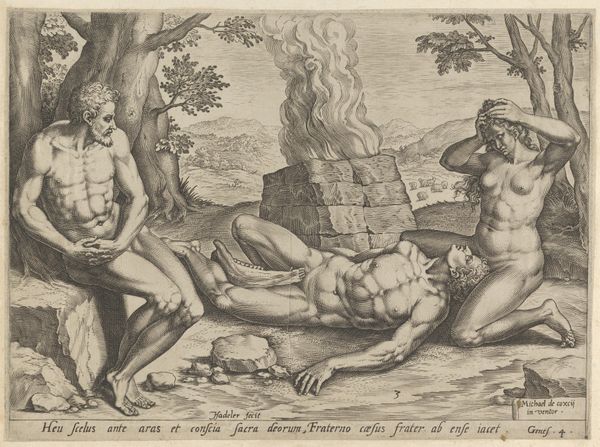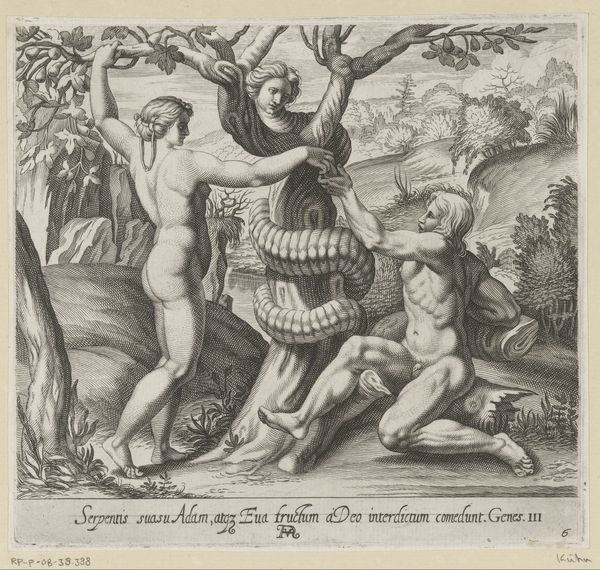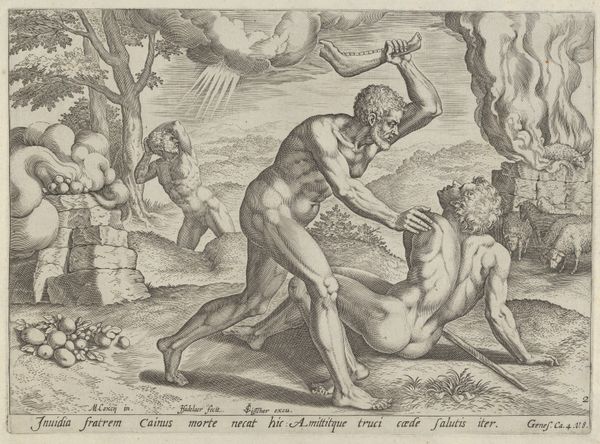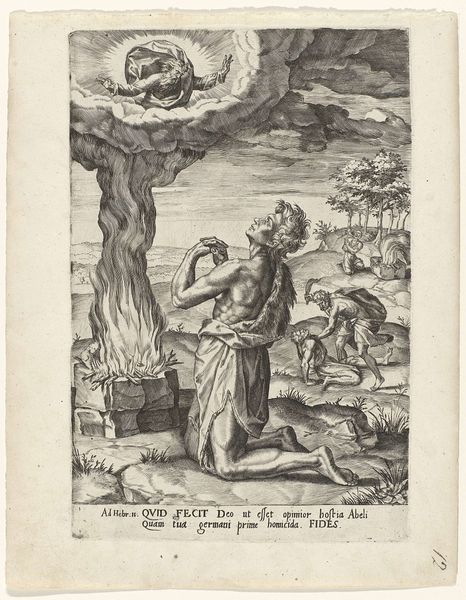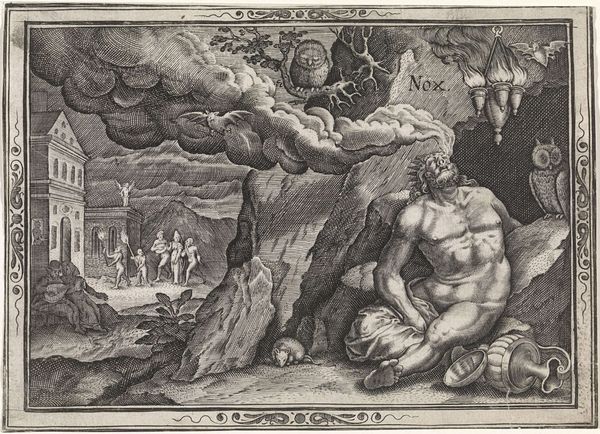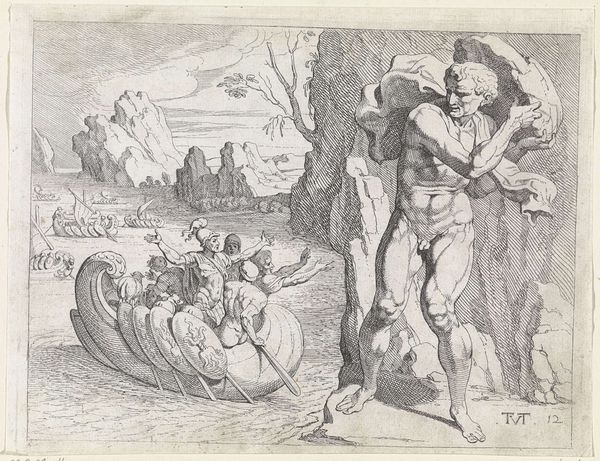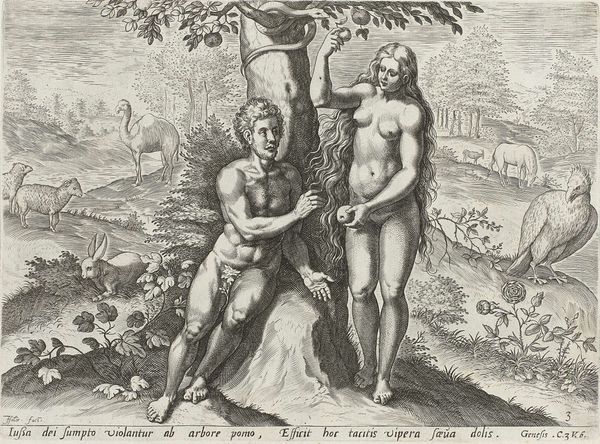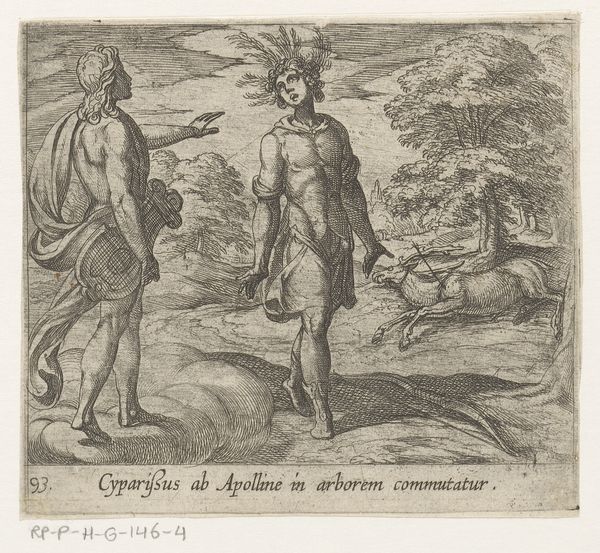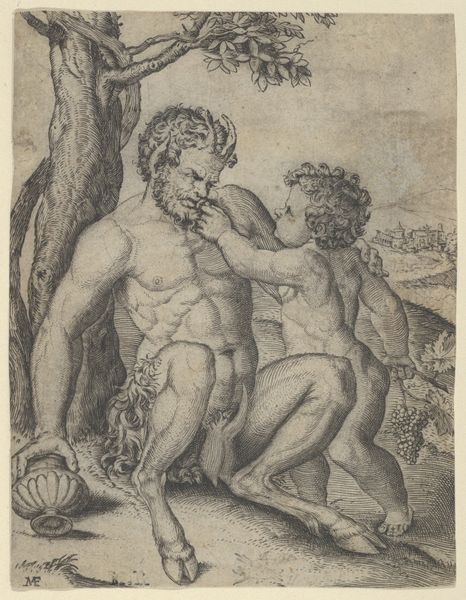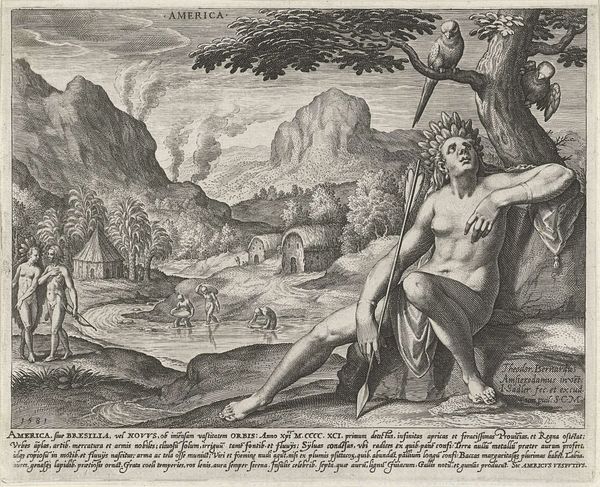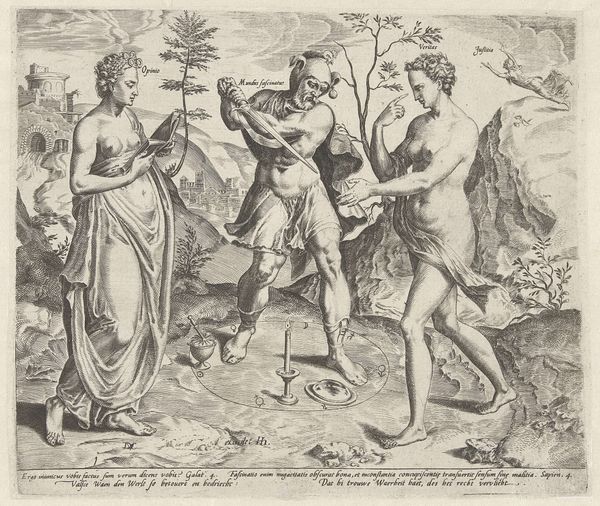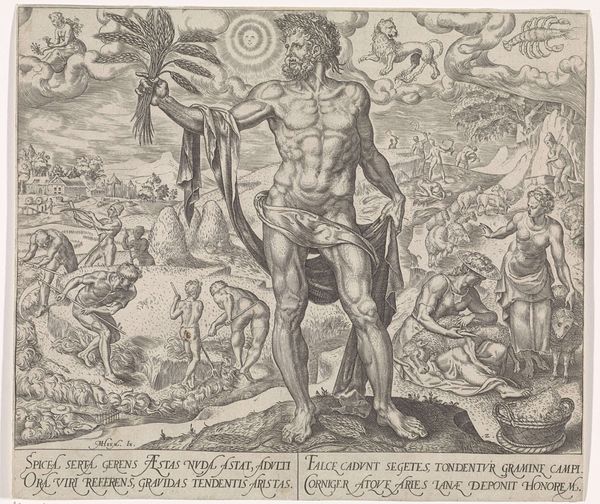
The sacrifice of Abel (plate 1 from The Story of Cain and Abel) 1576
0:00
0:00
drawing, print, etching, engraving
#
drawing
# print
#
etching
#
landscape
#
mannerism
#
figuration
#
history-painting
#
northern-renaissance
#
engraving
Dimensions: Sheet: 8 1/8 × 11 3/16 in. (20.7 × 28.4 cm)
Copyright: Public Domain
Curator: Looking at this etching, "The Sacrifice of Abel" from 1576, part of the series 'The Story of Cain and Abel' by Johann Sadeler I, I am struck by how it weaves together the religious narrative with details reflecting the artist's contemporary material world. Editor: The mood, for me, is overwhelmingly dramatic, isn't it? The figures seem so caught up, almost vibrating with emotion under that tempestuous sky. You feel a little sorry for them. Curator: Absolutely, but it is more than just emotional display. Consider the printmaking process. The lines are carefully etched and engraved, producing stark contrasts that would have been circulated as both art object and biblical instruction. The labor that goes into each line...it speaks volumes. Editor: And speaking of volumes, those are some beefy forearms on Abel! He’s built for hard work. But yes, you’re right, the physical effort put into creating the etching mirrors, perhaps, the effort that Abel makes in offering his sacrifice. Curator: Exactly! The very material used to depict the narrative elevates labor—both manual and agricultural—to the spiritual plane. How these objects were traded and understood by early collectors gives insights into social and religious values of the time. Editor: I like how the smoke rises and the light pours onto Abel; I'm touched by the very human reaching and receiving in such contrast to Cain's posture, almost turning away. Curator: We can read a story about spiritual devotion, as the text prompt in the engraving attests to, but it's vital to understand it within the history of printmaking as a craft, too. How many impressions of this print circulated to diverse locations and demographics? Editor: In that sense, each impression of the engraving itself mirrors Abel's continuous sacrifice. It becomes a repeatable act, available across time, a material record to ponder and reflect on the artist and on ourselves. Curator: The implications of this, its circulation and integration into different contexts… it pushes us beyond seeing simply an old biblical image, to considering the dynamics of power, religion, and creation of art at the end of the 16th century. Editor: Right. So much of seeing, really, comes from looking beyond what meets the eye. Thank you for pointing out just that, this conversation really brings it all together.
Comments
No comments
Be the first to comment and join the conversation on the ultimate creative platform.
